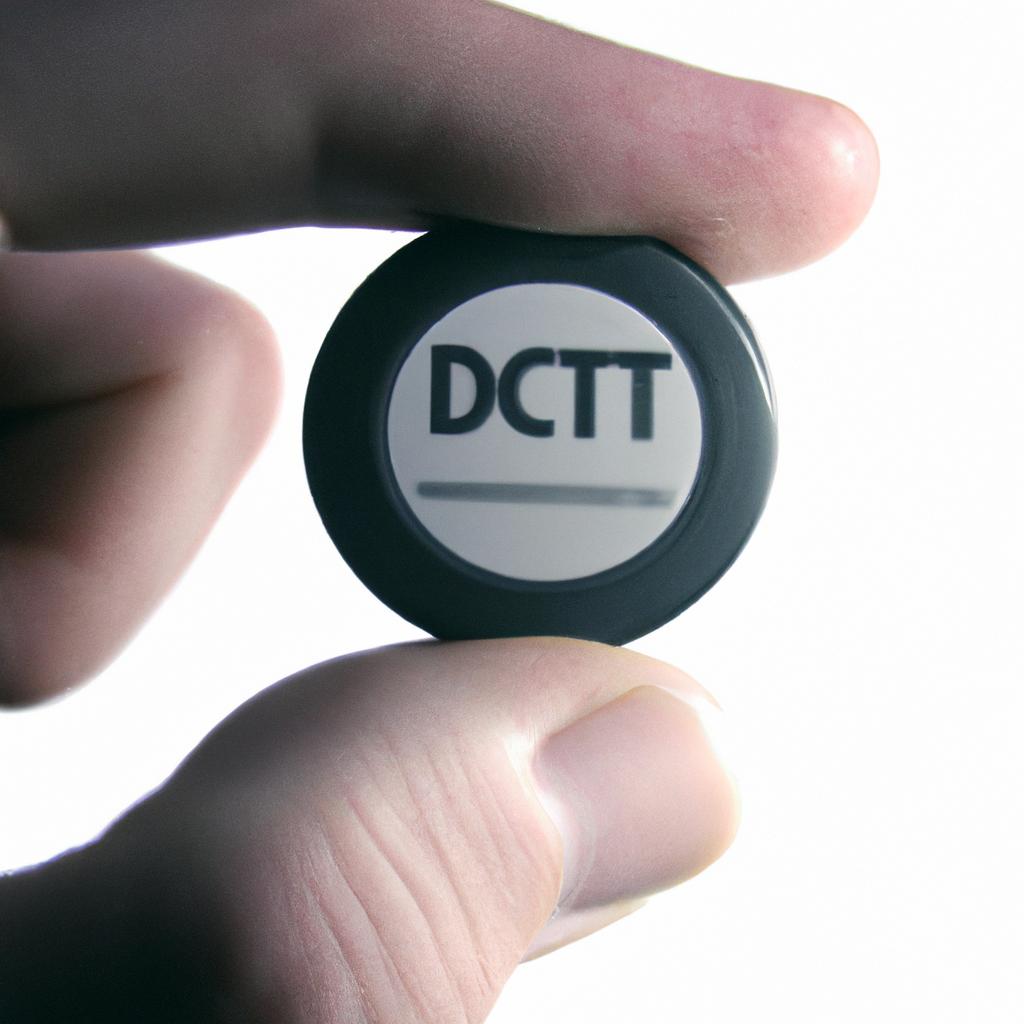Decentralized Applications (DApps) in the Context of Blockchain Technology: The Role of Computers and Software

Decentralized Applications (DApps) have emerged as a significant innovation in the realm of blockchain technology, fundamentally transforming how software applications are designed and operated. With their decentralized nature, DApps eliminate the need for intermediaries or central authorities to manage data transactions, ensuring increased transparency, security, and autonomy. As an illustration, consider a hypothetical case study where a social media platform operates as a DApp on the blockchain. In this scenario, users would have complete control over their personal data and content without having to rely on a centralized entity that often harvests user information for targeted advertising purposes.
The advent of blockchain technology has catalyzed the development of DApps by enabling secure peer-to-peer interactions without requiring trust between parties. Traditional centralized applications rely on third-party intermediaries to validate and process transactions, which can introduce vulnerabilities such as single points of failure and potential breaches in security. However, with DApps built upon distributed ledger technology, these concerns become obsolete due to their decentralized architecture. By leveraging cryptographic algorithms and consensus mechanisms like proof-of-work or proof-of-stake, DApps can ensure transactional integrity while maintaining network resilience.
In light of these advancements, it is crucial to delve into the role of computers and software within the context of DApps In the context of DApps, computers and software play a pivotal role in enabling the decentralized nature of these applications. Computers serve as nodes in the blockchain network, participating in the validation and verification of transactions through processes like mining or staking. They contribute computational power to solve complex mathematical puzzles or reach consensus on the state of the ledger.
Software, on the other hand, forms the foundation of DApps by providing the necessary code and protocols for their operation. Smart contracts, which are self-executing agreements with predefined rules encoded into them, are a key component of DApps. These smart contracts run on blockchain platforms such as Ethereum and facilitate automated interactions between parties without relying on intermediaries.
Furthermore, software development tools and frameworks specific to blockchain technology have emerged to support the creation and deployment of DApps. These tools enable developers to write smart contract code, design user interfaces, and interact with various blockchain networks.
Overall, computers and software form the backbone of DApps by facilitating secure peer-to-peer interactions, executing smart contracts, validating transactions, and maintaining the integrity of the decentralized network.
What are Decentralized Applications (DApps)?
Decentralized Applications (DApps) are a fundamental component of blockchain technology, revolutionizing various industries by offering new possibilities for secure and transparent digital interactions. Unlike traditional applications that rely on centralized servers, DApps operate on a decentralized network of computers, making them resistant to censorship and single points of failure. This section aims to provide an overview of what DApps are, their characteristics, and how they differ from conventional applications.
To illustrate the concept of DApps, consider a hypothetical scenario where individuals can securely store their personal data without relying on a central authority or third-party service provider. In this case, users could utilize a decentralized application built on blockchain technology to maintain control over their information while still enabling selective sharing with authorized parties. By eliminating intermediaries and leveraging cryptographic techniques, DApps ensure the privacy and security of user data in ways that were previously unattainable.
One defining characteristic of DApps is their ability to function autonomously through smart contracts – self-executing agreements embedded within the underlying blockchain infrastructure. These smart contracts enforce predefined rules and conditions agreed upon by all participants involved in the application’s ecosystem. The transparency afforded by these contracts enhances trust among users since transactions recorded on the blockchain are immutable and auditable by anyone.
The advent of DApps has brought about several benefits that contribute to their growing popularity:
- Increased Security: Through decentralization and cryptography, DApps offer enhanced security measures compared to centralized systems.
- Improved Transparency: Transactions carried out within DApps are visible to all participants, fostering accountability and reducing fraud.
- Resilience against Censorship: Due to their distributed nature, DApps resist censorship attempts as there is no central entity controlling access or content.
- Empowerment of Users: With DApps, individuals have greater control over their own data and assets without having to rely on intermediaries.
In summary, Decentralized Applications (DApps) represent an innovative approach to software development, leveraging blockchain technology to provide secure, transparent, and user-centric solutions. In the subsequent section, we will delve into how DApps function within a decentralized network, exploring their underlying mechanisms and key components.
*[DApps]: Decentralized Applications
| Benefits of DApps |
|---|
| Increased Security |
| Improved Transparency |
| Resilience against Censorship |
| Empowerment of Users |
Note: The table above illustrates the benefits of DApps in a concise manner.
How do DApps work?
Decentralized Applications (DApps) have gained significant attention in recent years due to their potential to revolutionize various industries. In this section, we will delve deeper into the workings of DApps and explore how they leverage blockchain technology. To illustrate these concepts, let us consider a hypothetical example of a decentralized ride-sharing platform called “RideChain.”
The Role of Computers and Software
In the context of RideChain, computers play a crucial role as they act as nodes within the decentralized network. Each node maintains a copy of the blockchain, which serves as an immutable ledger containing transaction history. Additionally, software applications facilitate the interaction between users and the DApp.
Key features that distinguish DApps from traditional centralized applications include:
- Transparency: The use of blockchain ensures that all transactions on RideChain are transparent and can be verified by anyone with access to the network.
- Immutability: Once recorded on the blockchain, data cannot be altered or tampered with. This guarantees integrity within RideChain’s ecosystem.
- Security: Through cryptographic techniques such as digital signatures, DApps like RideChain ensure secure transactions while preserving user privacy.
- Consensus Mechanisms: Decentralized networks utilize consensus algorithms like Proof-of-Stake (PoS) or Proof-of-Work (PoW) to validate and agree upon new additions to the blockchain.
| Advantages | Disadvantages |
|---|---|
| Increased Security | Scalability Challenges |
| Transparency | Potential for Regulatory Uncertainty |
| Enhanced Privacy | Limited User-Friendly Interfaces |
| Reduced Intermediaries | Reliance on Network Consensus |
Despite these advantages, it is important to note that DApps face challenges related to scalability due to limitations imposed by current blockchain technologies. Moreover, regulatory uncertainty surrounding cryptocurrencies may also impact the adoption and development of DApps.
Transitioning into our next section, we will explore the benefits of using DApps in various industries. By harnessing the power of blockchain technology, these applications can offer unique advantages that traditional centralized systems often lack.
The Benefits of Using DApps: Leveraging Blockchain Technology for Advancement
Note: The next section about “The benefits of using DApps” will follow after this one.
The benefits of using DApps
How do DApps work?
In order to understand how decentralized applications (DApps) function, let’s consider an example. Imagine a hypothetical social media platform called “DecentBook.” This platform operates on a blockchain network, where users can interact with each other without relying on a central authority. When a user posts content or interacts with others on DecentBook, their actions are recorded as transactions on the blockchain.
Key Features of DApps:
- Immutability: Once data is added to the blockchain, it cannot be altered or tampered with.
- Transparency: All transactions within a DApp are visible to all participants on the network.
- Security: DApps utilize cryptographic techniques to secure user data and ensure privacy.
- Autonomy: Since DApps operate on a decentralized network, they eliminate the need for intermediaries.
To better comprehend the role of computers and software in facilitating DApp operations, let’s examine some essential components:
| Component | Description |
|---|---|
| Smart Contracts | These self-executing contracts automate processes on the blockchain based on predefined conditions. They enable trust among parties by ensuring that agreements are automatically enforced. |
| Consensus Mechanisms | Computers within the DApp’s network collaborate to validate transactions and reach consensus regarding their validity. Various mechanisms like Proof-of-Stake (PoS) or Proof-of-Work (PoW) govern this process. |
| Distributed Ledger | A distributed ledger records all transactions across multiple nodes in the network. It ensures transparency by enabling anyone to verify transaction history while maintaining security through encryption techniques. |
The benefits of using DApps
The utilization of decentralized applications offers several advantages over traditional centralized systems:
- Enhanced Security: Due to their decentralized nature, DApps are less susceptible to hacking or data breaches since no single point of failure exists. Additionally, the immutability of blockchain ensures that once recorded, transactions cannot be altered.
- Elimination of Intermediaries: Traditional systems often involve intermediaries such as banks or online platforms, which can lead to additional costs and delays. DApps remove these intermediaries, allowing for direct peer-to-peer interactions without unnecessary third-party involvement.
- Increased Transparency: The transparency provided by DApps enables users to independently verify transactions and ensures a higher level of trust among participants. All transaction information is stored on the blockchain network and can be accessed by anyone in a secure manner.
- Greater Accessibility: By leveraging distributed networks, DApps enable global participation without geographical restrictions. This accessibility empowers individuals who may not have access to traditional financial services or centralized platforms.
These advantages make DApps an attractive option across various industries and use cases, from finance to supply chain management. However, despite their potential benefits, there are also several challenges faced by decentralized applications.
[Transition sentence into the subsequent section about “Challenges faced by DApps”] Despite their promising features and benefits, decentralized applications encounter certain obstacles that need to be addressed in order for them to reach wider adoption and fulfill their potential role within the blockchain ecosystem.
Challenges faced by DApps
Having examined the benefits of using decentralized applications (DApps), it is important to acknowledge that their implementation does not come without its own set of challenges. In order to fully understand and appreciate the potential of DApps, it is crucial to explore the obstacles they face.
Challenges in Implementing DApps:
-
Scalability Concerns: One major challenge faced by DApps is scalability. As more users join a particular blockchain network, the performance can be significantly affected due to increased computational requirements and limited processing capabilities of individual nodes. For example, imagine a hypothetical scenario where a popular social media platform decides to migrate to a blockchain-based DApp model. The sheer volume of user interactions and data storage would pose serious scalability concerns and potentially lead to slower transaction speeds or even system failures.
-
User Experience Limitations: Another key challenge lies in ensuring an intuitive and seamless user experience for individuals interacting with DApps. While traditional software applications have been refined over time, offering familiar interfaces and streamlined processes, many DApps are still in early stages of development. This lack of maturity often results in complex installation procedures, cumbersome wallet management, and unfamiliar user interfaces, which may deter mainstream adoption.
-
Security Risks: With any digital application comes inherent security risks, but the decentralized nature of DApps introduces additional vulnerabilities that must be addressed. Due to the absence of central authority or intermediaries governing transactions on a blockchain network, malicious actors could exploit weaknesses within smart contracts or launch attacks aimed at compromising user funds or private information. These security risks require robust measures such as code audits, bug bounties, and continuous monitoring to safeguard against potential threats.
To highlight some emotional aspects related to these challenges faced by DApps:
- Frustration among users encountering complicated installation processes.
- Concerns about privacy and data protection due to potential security vulnerabilities.
- Impatience caused by slower transaction speeds and system failures.
- Apprehension regarding the adoption of DApps as a mainstream technology.
Emotional table:
| Challenges Faced by DApps | Emotional Impact |
|---|---|
| Scalability Concerns | Frustration |
| User Experience Limitations | Apprehension |
| Security Risks | Concern |
The Future of DApps:
Despite these challenges, the potential benefits offered by DApps make them an exciting area for research and development. Innovations such as sharding, off-chain solutions, and user-friendly interfaces are actively being explored to address scalability concerns and improve user experience. Additionally, ongoing efforts in developing secure coding practices and auditing mechanisms aim to enhance the security of decentralized applications.
Looking ahead, it is crucial to consider how advancements in blockchain technology will shape the future of DApps. By exploring emerging trends and potential use cases, we can gain insights into what lies ahead for this transformative field.
The future of DApps
Transitioning from the challenges faced by decentralized applications (DApps), it is crucial to explore the future of this innovative technology. While there are hurdles to overcome, the potential for growth and development in the field remains promising.
To illustrate this point, let us consider a hypothetical scenario involving a DApp designed for supply chain management. This application utilizes blockchain technology to ensure transparency, traceability, and efficiency throughout the entire supply chain process. By recording each transaction on an immutable ledger, all parties involved can have confidence in the authenticity and integrity of the goods being exchanged. However, despite these advantages, there are various obstacles that need to be addressed for widespread adoption of such DApps.
Several key challenges continue to hinder the progress of DApps:
-
Scalability: As more users join a DApp network, its ability to handle increased transactions becomes essential. The scalability challenge lies in maintaining high throughput without compromising decentralization or security.
-
User Experience: Improving user experience is critical for mass adoption of DApps. Simplifying complex interfaces and ensuring seamless integration with existing systems would make them more accessible and attractive to a wider audience.
-
Governance: Decentralized governance models pose unique challenges compared to traditional centralized systems. Establishing effective decision-making processes that involve stakeholders while avoiding concentration of power requires careful consideration and ongoing refinement.
-
Interoperability: Seamless interaction between different blockchains and DApps is crucial for creating an interconnected ecosystem where value can flow freely across platforms.
To further understand these challenges facing DApps holistically, consider the following table:
| Challenge | Description |
|---|---|
| Scalability | Ensuring high throughput without sacrificing decentralization or security |
| User Experience | Enhancing accessibility through improved interface design |
| Governance | Developing transparent decision-making processes that avoid centralization |
| Interoperability | Enabling seamless interaction between different blockchains and DApps |
In conclusion, while the challenges faced by DApps are substantial, it is important to recognize that they represent opportunities for growth and innovation. Overcoming these obstacles will pave the way for a future where decentralized applications can realize their full potential.
Transitioning into the subsequent section about “Examples of successful DApps,” let us now delve into real-world instances where innovative solutions have triumphed over various hurdles.
Examples of successful DApps
With the rapid development and adoption of blockchain technology, decentralized applications (DApps) have emerged as a promising solution for various industries. These applications leverage the power of computers and software to offer innovative solutions that can revolutionize traditional business models. One example is the healthcare industry, where DApps can enhance data security and interoperability while empowering patients with better control over their medical records.
In the healthcare sector, imagine a scenario where every individual has access to their comprehensive medical history through a secure and decentralized platform. This hypothetical DApp would enable patients to grant permission for specific healthcare providers or researchers to access their medical records securely, eliminating the need for redundant paperwork and improving efficiency in delivering personalized care. Moreover, by leveraging smart contracts on the blockchain, this DApp could ensure transparent transactions between stakeholders involved in patient care, such as insurance companies and hospitals.
The potential benefits of DApps extend beyond just healthcare. Many other industries stand to benefit from adopting this revolutionary technology. Here are some key advantages:
- Enhanced Security: By utilizing blockchain’s inherent properties like immutability and cryptography, DApps offer increased security compared to centralized systems.
- Improved Transparency: DApps enable real-time auditing capabilities by recording all transactions on an immutable ledger, ensuring transparency and reducing fraud possibilities.
- Cost Efficiency: With intermediary middlemen eliminated or minimized due to smart contract automation, businesses can save costs associated with intermediaries’ fees.
- Empowering Individuals: DApps provide individuals with more control over their data and assets by removing third-party involvement, fostering trust among users.
To further illustrate the potential impact of DApps across different sectors, consider Table 1 below showcasing how decentralization can transform key industries:
| Industry | Current Challenges | Proposed Solutions |
|---|---|---|
| Supply Chain | Lack of transparency | Real-time traceability |
| Finance | Centralized control and fees | Peer-to-peer transactions |
| Energy | High cost and inefficiency | Decentralized energy trading platforms |
| Voting | Security concerns | Tamper-proof and transparent voting |
Table 1: Potential Impact of DApps in Key Industries
In conclusion, decentralized applications (DApps) have the potential to revolutionize various industries by leveraging blockchain technology. The healthcare industry is just one example where DApps can offer secure access to medical records while streamlining processes. However, the advantages extend far beyond healthcare, as highlighted by enhanced security, transparency, cost efficiency, and individual empowerment. By embracing this technology, key sectors such as supply chain, finance, energy, and voting could experience significant transformation.
Note: This section provides an overview of the potential impact of DApps in different industries; it does not cover specific examples of successful DApps.






